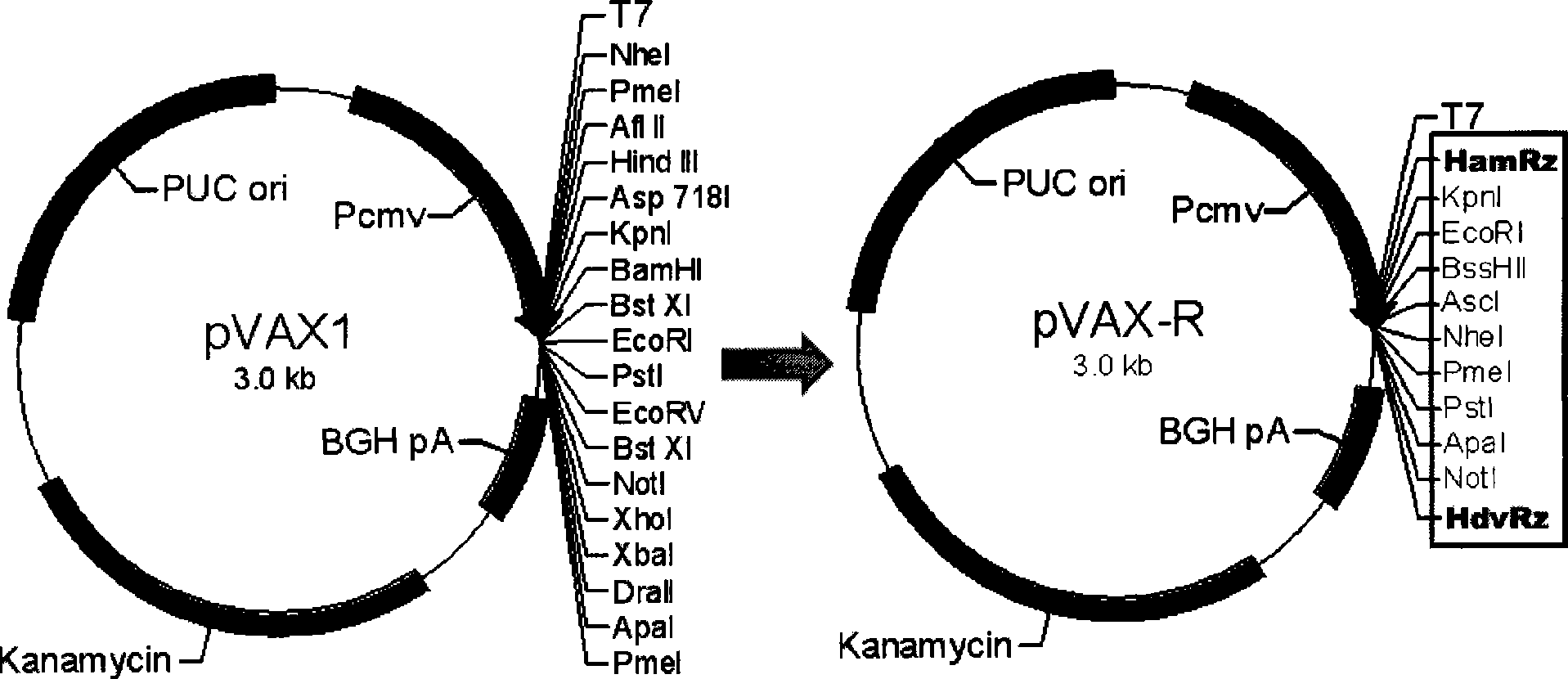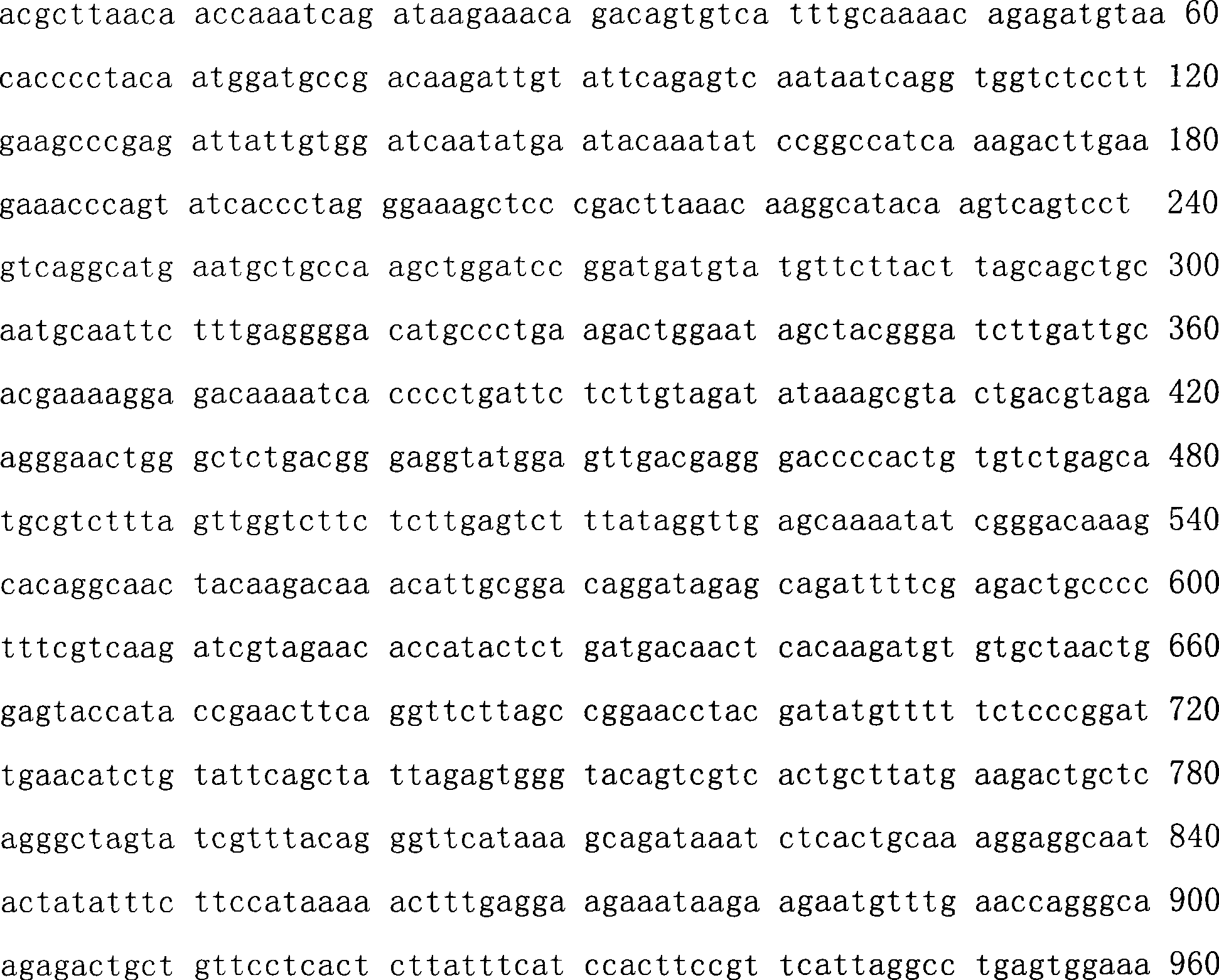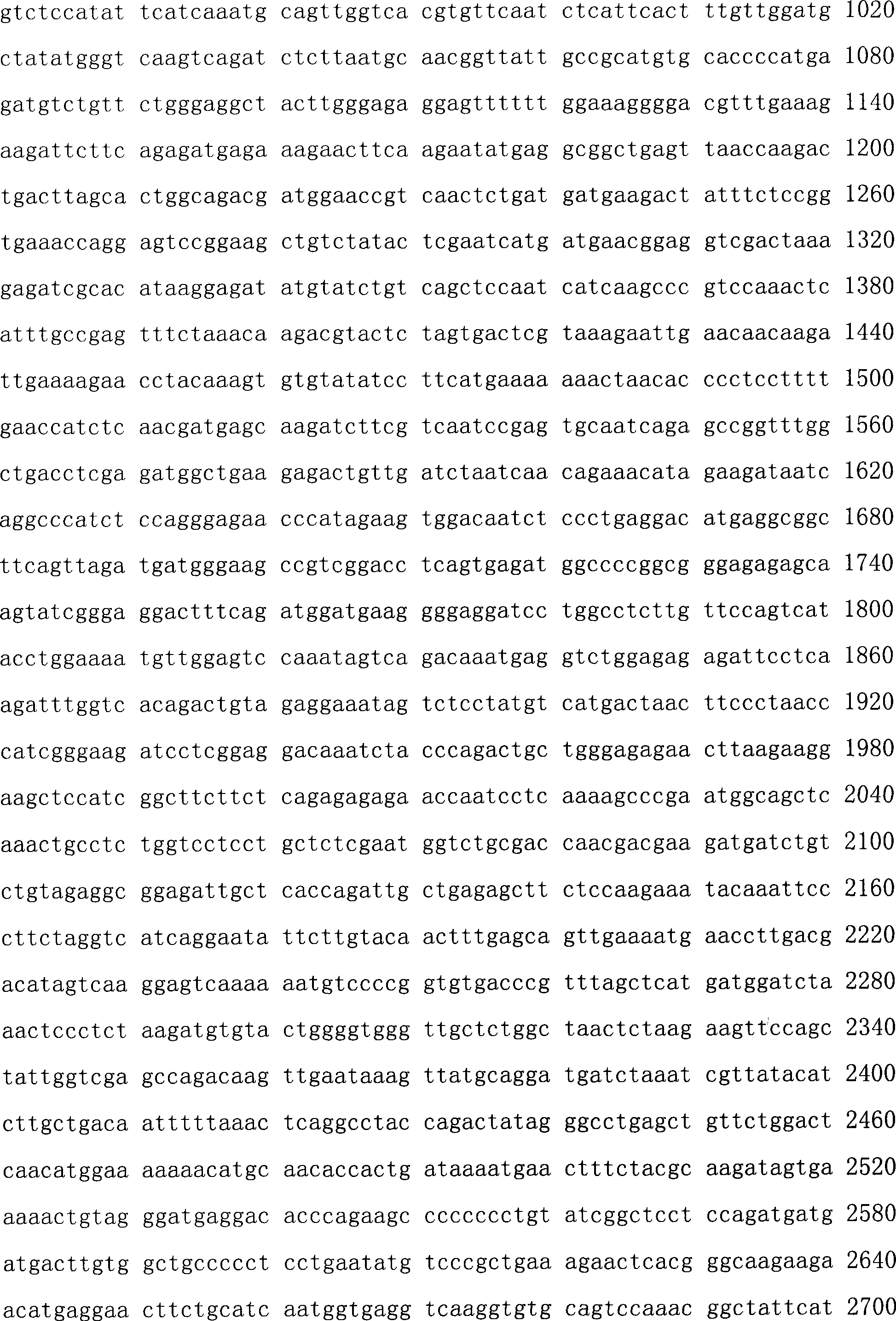Rabies viruses CTN strain complete genome infectious cDNA cloning, and preparation and use thereof
A rabies virus and whole genome technology, applied in the field of bioengineering, can solve the problems of GC% imbalance of primers, difficult optimization of PCR reaction conditions, mismatch of upstream and downstream primer lengths, etc., and achieve a wide range of applications and powerful functions
- Summary
- Abstract
- Description
- Claims
- Application Information
AI Technical Summary
Problems solved by technology
Method used
Image
Examples
Embodiment 1
[0029] Example 1 Construction method of whole genome infectious cDNA clone of rabies virus CTN strain
[0030] (1) Viruses:
[0031] The parental virus of the CTN strain rabies virus was isolated from the brain tissue of a patient infected with rabies virus in Zibo City, Shandong Province in 1953. The isolated virus was continuously passaged in the mouse brain for 56 generations, and then cultured in human diploid cells. The attenuated rabies virus vaccine strain obtained by continuing to pass 50 generations on (BMK-17) was approved by the World Health Organization (WHO) as a strain for the production of rabies vaccine in China in 1983 and 2005. This virus strain is preserved and provided by the China Institute for the Control of Pharmaceutical and Biological Products.
[0032] (1) Extraction of viral RNA:
[0033] Take a small amount of freeze-dried poisoned mouse brain, first add 0.2ml TRIzol Reagent (Invitrogen Company) to grind into a homogenate, and then add 0.8ml TRIzo...
Embodiment 2
[0074] Embodiment 2 The whole genome infectious cDNA clone of the rabies virus CTN strain described in the present invention is a weakly toxic animal experiment example
PUM
| Property | Measurement | Unit |
|---|---|---|
| Titer | aaaaa | aaaaa |
Abstract
Description
Claims
Application Information
 Login to View More
Login to View More - R&D
- Intellectual Property
- Life Sciences
- Materials
- Tech Scout
- Unparalleled Data Quality
- Higher Quality Content
- 60% Fewer Hallucinations
Browse by: Latest US Patents, China's latest patents, Technical Efficacy Thesaurus, Application Domain, Technology Topic, Popular Technical Reports.
© 2025 PatSnap. All rights reserved.Legal|Privacy policy|Modern Slavery Act Transparency Statement|Sitemap|About US| Contact US: help@patsnap.com



